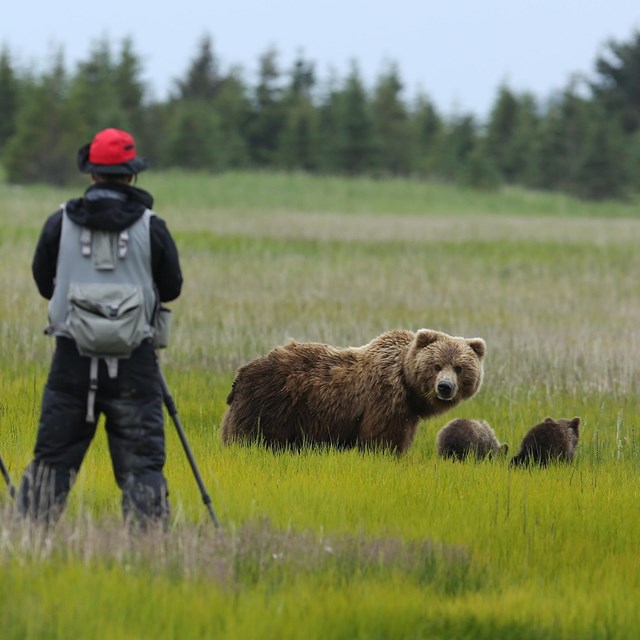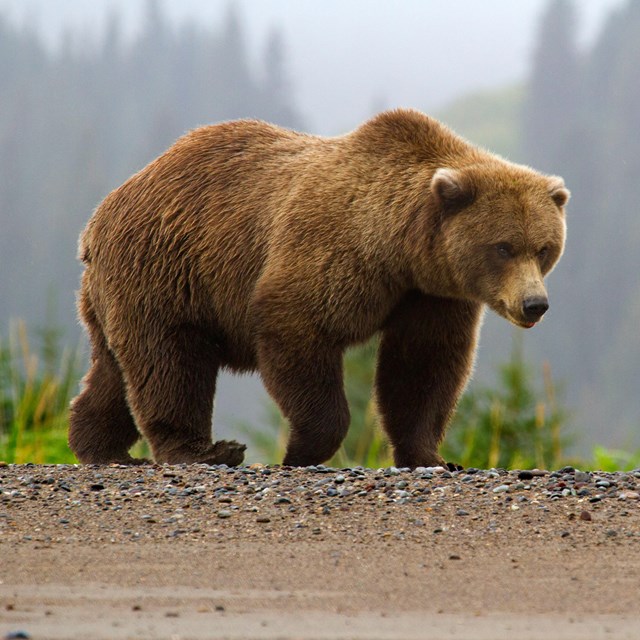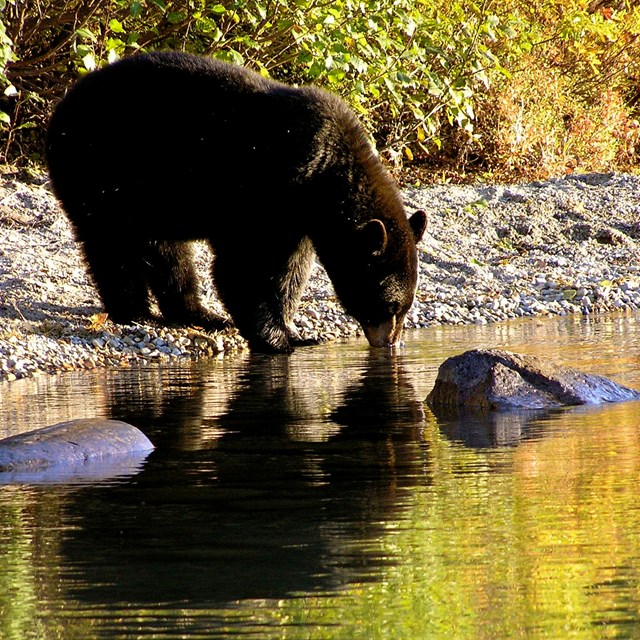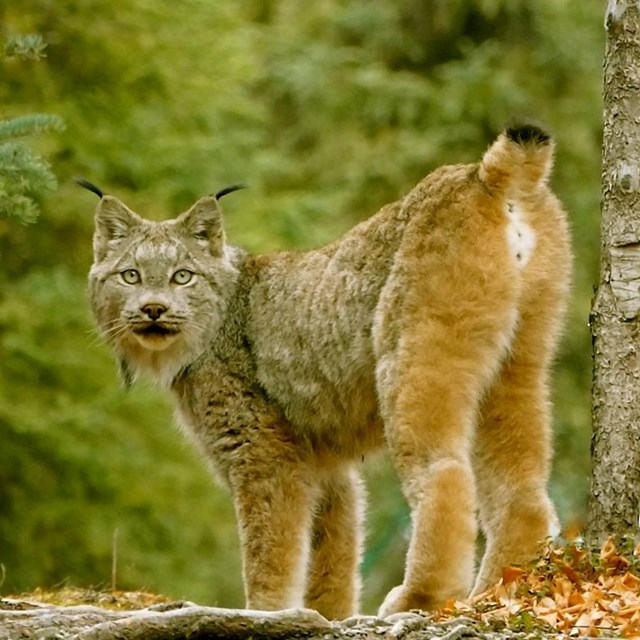
NPS Photo / J. Mills While the American black bear (Ursus americanus) is the most common bear species in North America, seeing one in Lake Clark is a rare treat. On this stretch of the Alaska Peninsula they are outnumbered by their their larger brethren, the brown bears, and thus their choice of habitat is usually one that keeps them away from competition with that much larger species. In a land where winter can last six or more long months, black bears can only survive if they can build up enough fat stores for the long hibernation. In Lake Clark, food is far more abundant in the coastal areas where sedges growing in salt marshes provide an abundant early-season source of protein. Therefore, it is not surprising that we find more black bears living in the coastal areas than the interior of the park. Biologists conducting aerial surveys estimate 136 black bears per 1000km2 on the coast, whereas the density is closer to 77 black bears/1000km2 inland. Brown bears dominate the prime feeding grounds in the coastal salt marshes; however, we do see black bears using the more secluded sections on occasion. They are most likely the largest boars, and even so, they stay higher near the tree line where they can escape to cover if need be. In the spring the rest of their diets consists of roots and other edible shoots. Some black bears take advantage of newly born moose calves, and are at times, and in some areas, their greatest predator. As summer progresses, feeding shifts to salmon if they are available without having conflict with brown bears. Berries are an important late summer-fall food. Ants, grubs, and other insects help to round out the black bear's diet. Unlike other areas of Alaska, the black bears here are predominately black in color. Even so, it is safest to use other physical characteristics when attempting to identify a bear in the field. Remember, black bears are wild animals and can be dangerous. Follow some basic guidelines to stay safe in bear country.
|
Last updated: August 15, 2016






